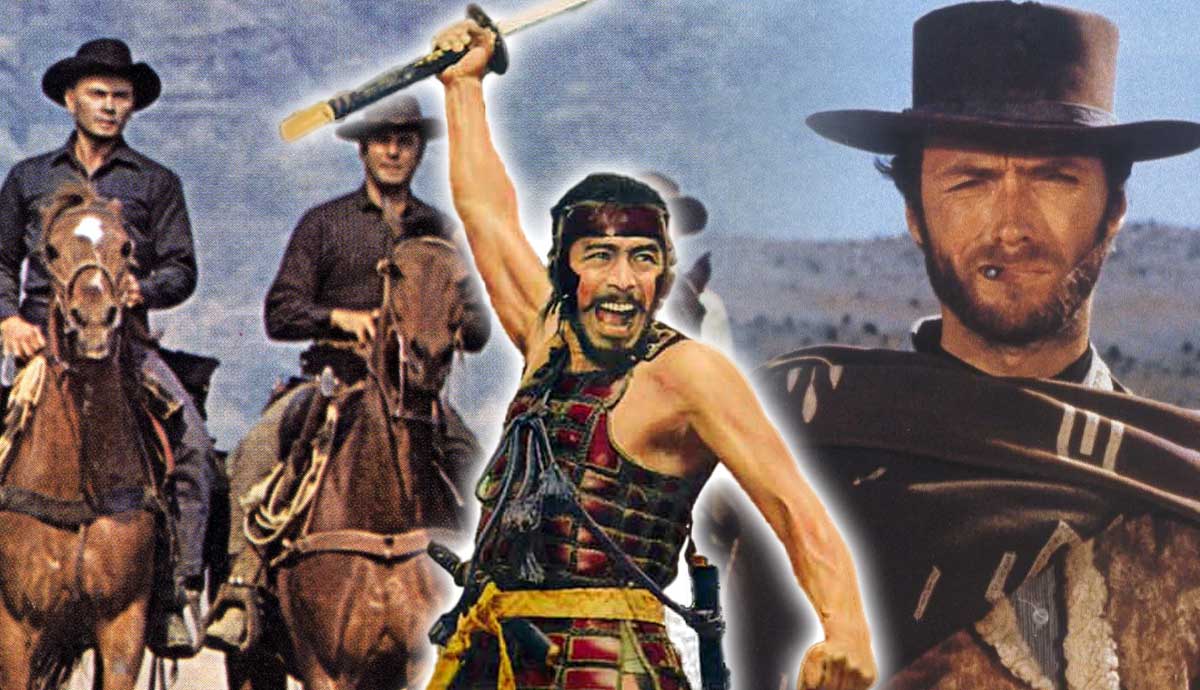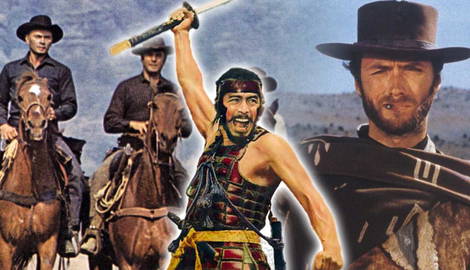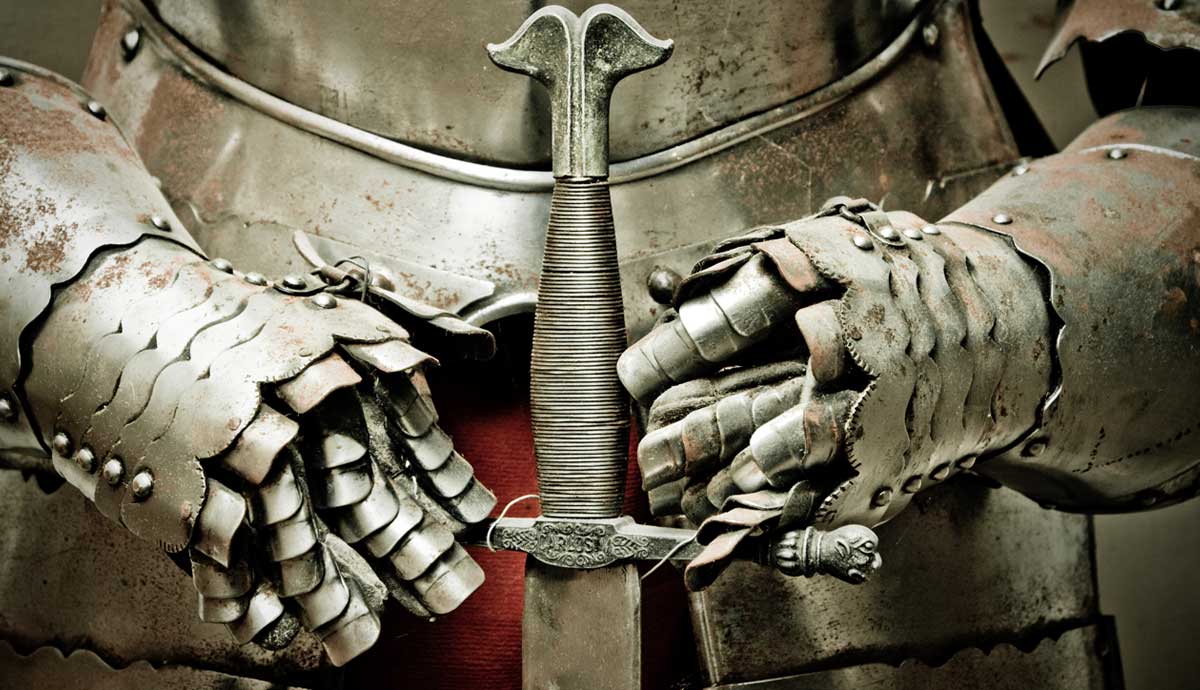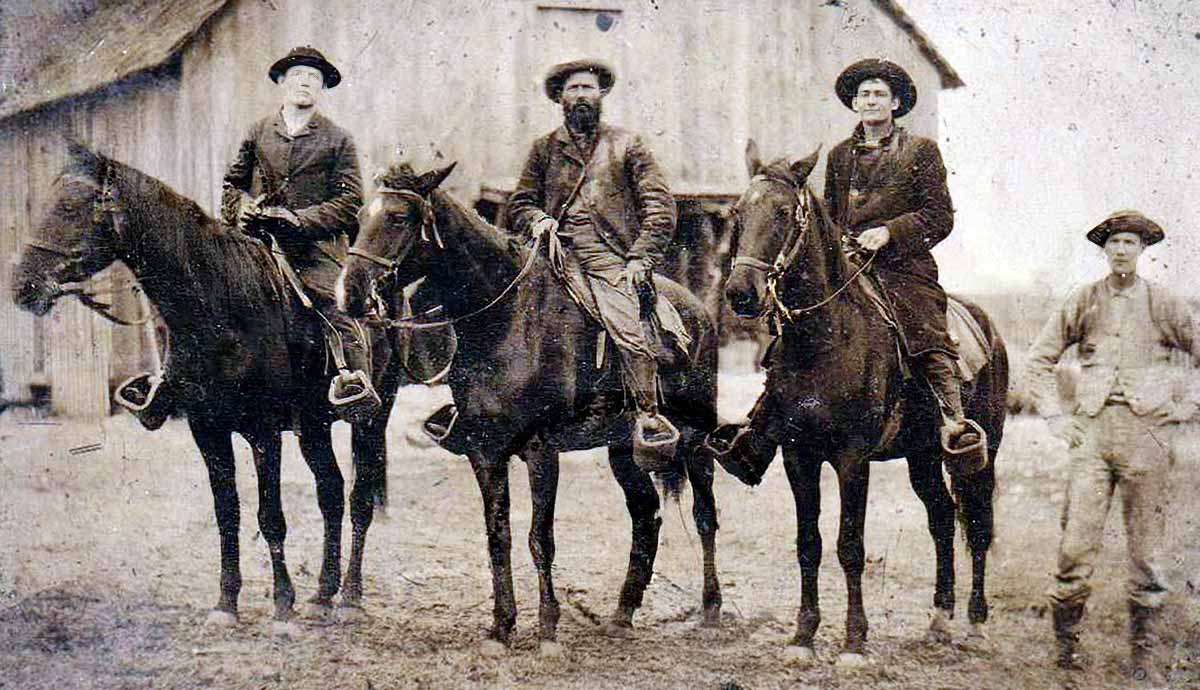
Set in medieval Japan, the samurai was a skilled fighter ready to take on his foes. Meanwhile, with Westerns, the gunslinger often stood alone against the odds, one hand tapping his six-shooter. Throughout the history of these two film genres, each has borrowed themes, plots, and settings from one another. As each genre borrowed from the other, their lasting effects made them more fun to watch. Each could reflect themes of loyalty, honor, and duty, and their storytelling became more complex and nuanced, making for a better movie.
When Did Samurai Movies Start Influencing Westerns?

The cross-culture exchange began in the 1950s. By then, classic samurai movies like The Seven Samurai (1954), and Yojimbo (1961), began to inspire American moviemakers. The Magnificent Seven, directed by John Sturges in 1960, changed the Seven Samurai’s setting to Mexico. Others, like Sergio Leone, produced movies like the 1964 Fistful of Dollars, based on Yojimbo.
What Did Westerns and Samurai Movies Have in Common?

Samurai movies undoubtedly shaped the nature of American Westerns. Before this cinematic cultural swap, Western plots often created straightforward good versus evil storylines. But following influence from samurai storylines, the gunslinger often now faced complex situations that had their own internal conflicts or ambiguous motives. Yojimbo’s plot and A Fistful of Dollars’ main protagonists played two sides against each other but showed some decency.

Japanese and American directors often utilized dramatic cinematic effects for these movies, using wide shots, striking landscapes, and extreme close-ups. Sergio Leone’s Spaghetti Westerns especially used this technique, featuring Clint Eastwood chewing an old cigar while staring down his opponents in a dusty street.
Who Were the Key Directors for Samurai Movies and Westerns?

The directors who shaped these movies are greats like Akira Kurosawa and John Ford. Famous since the 1930s, John Ford’s Western credits include Stagecoach (1939) and other classics. Kurosawa, Japan’s most renowned director, started directing in the 1940s and was a John Ford fan. Kurosawa directed the often-mentioned Seven Samurai or Yojimbo. The movie’s narrative structure and visuals reflect Ford’s impact on Kurosawa. His skills and talent for storytelling and narratives set a high standard for samurai movies, which many directors copied.

John Ford, born in 1894, had acquired two Academy Awards for directing or Best Picture by 1950. Best known for Westerns, Ford directed dozens of films during his career. Known for catching the vast American landscape as a movie background, Ford also worked on themes of morality, individualism, and toughness. His 1956 Western The Searchers is considered one of the best films created. Though not directly influenced by samurai movies, his Western movies impacted Kurosawa.
A little-known fact is that both men met twice. In 1945, Ford visited Kurosawa’s movie set in Japan. Their second meeting occurred in London in 1957. Kurosawa was supposedly flattered knowing Ford had viewed his movies.
How Did Samurai Movies Inspire Spaghetti Westerns?

The Spaghetti Westerns of the 1960s drew on the same samurai mold established earlier. Like the tough samurai, the lone gunslinger faced great odds or a dilemma with an uncertain ending. The often-copied Yojimbo, was adapted by the celebrated Sergio Leone into the 1964 film A Fistful of Dollars. Like Yojimbo, a man with no name arrives in a divided, corrupt town. Soon, he exploits the factions for his own gain.
These Westerns, named ‘spaghetti’ for their Italian directors, were shot primarily in southern Spain or Sicily. These regions contained the same parched scenery of America’s Southwest. Like their Japanese counterparts, Leone took his films a further step. He often used stylized violence to startle his audiences. The European locations made scenes seem grittier and rawer. When combined, all these elements increase the tension and atmosphere of the film. The Spaghetti Western heyday lasted into the 1970s, even as audience interest waned.
Who Became Famous from Samurai Movies and Westerns?

The cinematic exchange between samurai movies and Westerns introduced actors like Toshiro Mifune, Clint Eastwood, and Steve McQueen to different audiences. Toshiro Mifune was first introduced to international audiences through Kurosawa’s movies. The Seven Samurai reached global fame, becoming a breakthrough role for Mifune. His performance in Yojimbo helped create the loner image. He later starred in American films like 1968’s Hell in the Pacific.

Westerns based on samurai movies introduced rising American actors like Clint Eastwood and Steve McQueen. The iconic A Fistful of Dollars displayed Eastwood as a gunslinger with a lightning draw. Meanwhile, Steve McQueen’s unflappable gunslinger in The Magnificent Seven (1960) appealed to Japanese audiences, resembling the artfully skilled samurai.






